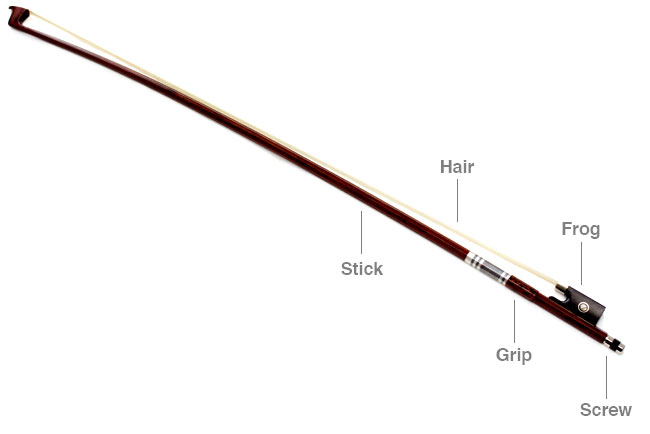Are you ever surprised by how vast the difference is between a rare artifact’s mundane appearance and its contrasting exorbitant price? These luxury objects are usually exclusive and handmade using rare materials, perhaps in limited quantities. Usually, these items are relatively useless and mostly for show, but occasionally these extremely high-end products are the necessary tools of a trade. For example, professional photographers use cameras worth thousands of dollars as well as many lenses worth thousands more in order to do what they do. Professional bike racers spend thousands of dollars on a competitive bike. Professional politicians spend significant chunks of their savings on their campaigns. In the same way, cellists end up spending more than they’d prefer to on their instruments.
This is the situation that cellists like me find themselves in. I don’t regret choosing the cello, but it definitely is the most expensive hobby I have ever been involved in. That is understandable, I hope, since many instruments are expensive and instruments are usually not impulse buys. However, cellos are among the most expensive of all orchestral instruments.
Go ahead and take a guess and write down how much you think a student cello or professional-grade cello should cost. Write those values down, and I’ll let you know whether you were right at the end of this post. In the meantime, let me explain the remarkable construction of a cello that leads to its unique sound and price.
Cellos are handmade, and they take several months to make. This in itself speaks volumes about how much manpower it takes for a cello to exist. However, the labor is only one part of the cost. Cellos have some pretty special parts made of relatively rare materials. The pegs, nut, fingerboard, and tailpiece are all made of ebony, an incredibly hard and dense wood that is also quite rare. The main body of the cello is made of mostly maple, but with a pine front, all hand-carved and/or bent.

parts of a cello from wikipedia
The strings of a cello are made of similarly unique materials. In the baroque era of music, most cello strings were made of dried sheep/goat intestines. Today, they are usually made with a core of steel or synthetic materials. However, wound around this core is a coil of tungsten, steel, aluminum, or silver, which itself can be plated with chrome or gold to gain the desired sonic effect. These rarer metals predictably make a set of strings cost up to hundreds of dollars, which I am reminded of often as strings have to be replaced approximately every year under regular use, and far more often for professionals.
But wait, there’s more! The cello is a bowed instrument, and the bow itself has many unique parts. The main body of the bow, the stick, is made of pernambuco wood, also known as brazilwood. Unfortunately, the pernambuco tree is officially an endangered species with its international export now illegal, so bow makers are now sometimes adopting alternative materials such as carbon fiber. The hair of a bow is bleached horsehair from the horse’s tail, and the grip is made of leather or snakeskin. The frog can be made of ivory or ebony with a mother-of-pearl inlaid within. The tip of the bow (not seen) is also traditionally made of ivory.

Parts of a bow from Sessionville
To protect these valuable instruments, musicians need a protective case. However, the cello is rather unwieldy, necessitating not simply a strong case, but also a lightweight one such that a person could carry it to and from gigs, rehearsals, and performances. Most cello cases are made of fiberglass and/or carbon fiber. This also contributes to the cost of owning a cello.
Now, for the moment of truth. Due to the above factors, a student-quality cello would cost from $3,000 to $10,000, and a professional-quality cello would cost from $10,000 to the hundreds of thousands of dollars. How does this compare to your initial impression?
What’s the point of paying so much money for a cello? Is there any alternative? Well, the the point of paying all this money is that there are some things you simply need as a professional musician. There really aren’t many alternatives today, since the art of instrument making is so detailed and traditional that modern technology is hard to apply to the process.
The point of this article is not to scare you from learning a new instrument or to complain, but rather so that you are more aware of something that I feel needs more attention. From now on, you will not be like my roommate’s classmate, who estimated Yo Yo Ma’s cello to be worth “about two hundred dollars.”
Edit: I found a website that completed an entire study on the costs associated with owning a string instrument, check it out!
This was a very interesting blog post as you approached one of your passions with a different angle. I actually predicted the cello to be around the price it is as I do see them as very intricate instruments. I have always been amazed at the way some instruments sound and are used to create such sounds, so I assumed they had to be made with rare materials. However, because I don’t know anything about how cello’s are made, it was interesting reading about what they use to make them. Although costly, I recognize how cool these instruments are and I’ve always admired them and attempted to learn how to play one.
I never knew how expensive a cello was or even thought about it, so this was an eye opening post. It does make sense though since all of the hard work, specific material, and intricate detailing goes into creating it. It would be nice if there was a cheaper alternative because it might encourage more people to begin playing the cello and potentially fall in love with a new hobby.